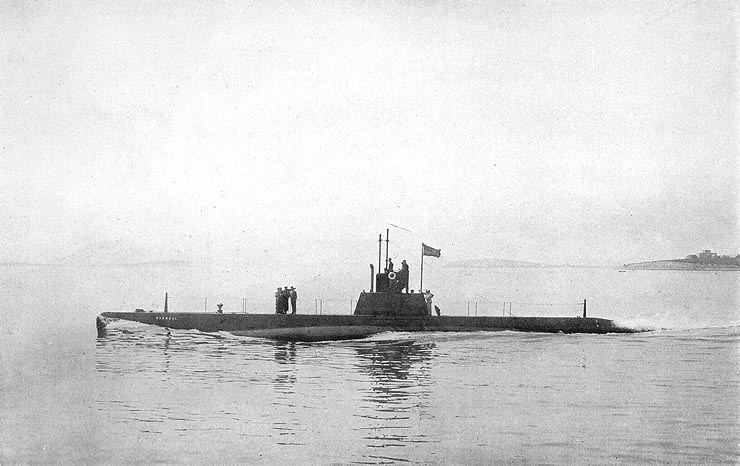Name D class | ||
 | ||
Built April 1909–September 1910 | ||
The United States D-class submarines were a trio of submarines built for the United States Navy in the first decade of the 20th century. All three ships served during World War I providing training for crews and officers on the US East Coast, before the class was decommissioned and sold for scrap in 1922.
Contents
Description
The D-class submarines were enlarged versions of the preceding C class, the first American submarines armed with four torpedo tubes. They were built by the Fore River Shipbuilding Company of Quincy, Massachusetts, under a subcontract from the Electric Boat Company of Groton, Connecticut. They had a length of 134 feet 10 inches (41.1 m) overall, a beam of 13 feet 10 inches (4.2 m) and a mean draft of 12 feet 6 inches (3.8 m). They displaced 288 long tons (293 t) on the surface and 337 long tons (342 t) submerged. The D-class boats had a crew of 1 officer and 14 enlisted men. They had a diving depth of 200 feet (61.0 m).
For surface running, they were powered by two 300-brake-horsepower (224 kW) NELSECO gasoline engines, each driving one propeller shaft. When submerged each shaft was driven by a 130-horsepower (97 kW) electric motor. Two 60-cell batteries provided power when submerged. They could reach 13 knots (24 km/h; 15 mph) on the surface and 9.5 knots (17.6 km/h; 10.9 mph) underwater. On the surface, the boats had a range of 1,179 nautical miles (2,184 km; 1,357 mi) at 9.6 knots (17.8 km/h; 11.0 mph) and 24 nmi (44 km; 28 mi) at 8 knots (15 km/h; 9.2 mph) submerged.
The boats were armed with four 18-inch (45.7 cm) torpedo tubes in the bow. They did not carry reloads for them.
These vessels included some features intended to increase underwater speed that were standard on US submarines of this era, including a small sail and a rotating cap over the torpedo tube muzzles. For extended surface runs, the small sail was augmented with a temporary piping-and-canvas structure. Apparently the "crash dive" concept had not yet been thought of, as this would take considerable time to deploy and dismantle. This remained standard through the L class, commissioned 1916-1917. The streamlined, rotating torpedo tube muzzle cap eliminated the drag that muzzle holes would otherwise cause. In the stowed position, the submarine appears to have no torpedo tubes, as the holes in the cap are covered by the bow stem. This feature remained standard through the K class, after which it was replaced with shutters that were standard through the 1950s.
